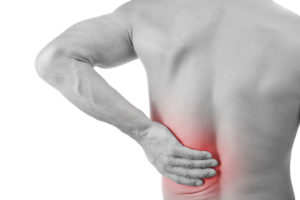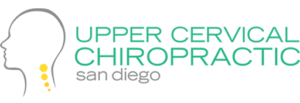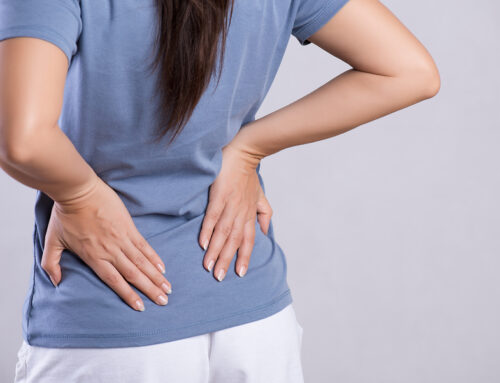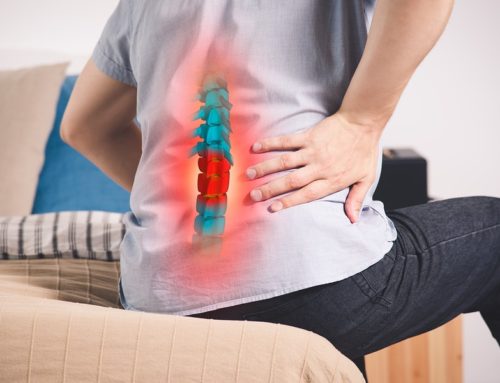 Back pain is so common that it is the single leading cause of disability worldwide. At any given time, there are 31 million people across the U.S. alone who are suffering from low back pain. Back pain can not only be a nag, it can have big implications on a person’s quality of life causing them to miss work and put a strain on their family and social life. It is estimated that 8 out of every 10 people will experience a back problem at some point in their lives. Taking the time to educate yourself about the sources of back pain and things you can easily do to stay strong and healthy can pay you dividends in the future.
Back pain is so common that it is the single leading cause of disability worldwide. At any given time, there are 31 million people across the U.S. alone who are suffering from low back pain. Back pain can not only be a nag, it can have big implications on a person’s quality of life causing them to miss work and put a strain on their family and social life. It is estimated that 8 out of every 10 people will experience a back problem at some point in their lives. Taking the time to educate yourself about the sources of back pain and things you can easily do to stay strong and healthy can pay you dividends in the future.
Table of Contents
Common Reasons for Back Pain
Your back is a complicated structure that can develop pain and discomfort from numerous sources:
- Ligament sprain – ligaments are the tissues that connect bones with other bones. Your spine has many ligaments that give it strength, stability, and support. Just as with any other ligament in your body, spinal ligaments can become injured.
- Muscle strain – the muscles in your back can become strained from a variety of injuries including improper lifting technique or sports injury. The back also tends to compensate for weakness in the core and tightness of other muscles such as the hamstrings. When the back works overtime, it can lead to muscle strain.
- Disc bulge or herniation – the vertebrae in your spine are separated by discs that provide cushion for your spine.
- Joint irritation or arthritis – the joints in your spine can become irritated by injury, repetitive use, and arthritis.
- Referred pain from internal organs – internal organs like the kidneys and gallbladder can cause referred pain to parts of your back.
Based on where your back pain is originating, it can vary in quality. Back pain can range from a mild annoyance to a severe, disabling pain. It can be a dull ache or sharp, stabbing pain. It can come and go infrequently or be constant.
If you experience back pain, evidence shows that medications are not always the best go-to choice for relief. Studies are showing that common choices for back pain, such as NSAIDs (non-steroidal anti-inflammatory drugs), anticonvulsants (like gabapentin), and opioids are not as effective as they were once believed to be. Chronic back pain sufferers may also be concerned about the long-term effects of taking medication over time. Below we’ll discuss ten natural options that are accessible to anyone who wants to reduce and prevent back pain.
Ten Tips for Back Pain Relief
- Establish a regular exercise routine – aerobic exercise releases endorphins, which are hormones made naturally in your body that can be as strong as a pain medication. Endorphins not only help to change the way your brain perceives pain, but they can also reduce stress, depression, and anxiety, all of which can play a role in chronic back pain.
- Eat an anti-inflammatory diet – chronically high levels of inflammation in the body can be a source of nagging back pain. Just as there are inflammatory foods (I.e. sugar), there are foods that can help fight inflammation. Incorporating these foods into your daily diet can help to get you on the way to feeling better. A good place to start is by making sure you’re getting adequate water intake. Good food choices to start with might include lots of green, leafy vegetables, avocado, banana, wild-caught fish, and other clean, lean protein sources.
- Try ice or heat therapy – icing a painful area can help to cool down an inflamed, angry back. Ice is typically used on an acute injury in the first few days. Contrarily, heat stimulates blood flow which can bring fresh nutrients to healing tissues.
- Limit bed rest and inactivity – when you’re hurting, your first instinct might be to stop your normal physical activities and lie down. However, when your back starts bugging you, keeping active can actually help you to get through the pain. You may not be able to train or workout as hard as you ordinarily would and you might need to watch how much weight you’re lifting at work, but ceasing these activities entirely in favor of bedrest might lengthen your recovery time.
- Check your posture – many people don’t take a moment to think about their posture as they go about their everyday activities. Check yourself as you sit at your workstation or perform your daily tasks. Small bad habits can add up over the course of months and years.
- Strengthen your core – your back and abdominal muscles play a big part in giving your lumbar spine support. If you’re suffering from back pain, incorporating some core-strengthening exercises into your day can start to build a good support system for your low back. Try sitting on an exercise ball or holding a perfect plank position.
- Increase your flexibility – while some muscles may lack the strength to support your back properly, others might be too tight. Tight hamstrings, a problem that plagues many people, can be a major contributor to low back pain. Stretching your hamstrings out every day can bring balance back into your pelvis and lumbar spine.
- Sleep well – being well rested is one of the best things you can do to make sure your body is able to heal. Your mattress should not be too soft – a soft mattress does not give your spine the support it needs throughout the night.
- Quit smoking – smoking not only damages your lungs, it also increases your risk of developing back pain. Nicotine reduces the amount of blood flow and nutrients that are delivered to the tissues of your back and spine, which can easily lead to pain and degeneration.
- Get proper care for your spine – taking good care of your spinal health is important to live as pain-free of a life as possible. Injuries happen and wear and tear inevitably occur over time. Maintaining the health of your spine will keep your body functioning as optimally as possible.
Caring for Your Spine From the Top Down
When the uppermost vertebra in your spine, the atlas, is out of alignment, the entire spine will eventually have to compensate. These compensations are your body’s attempt to keep your head properly balanced and your eyes level with the horizon, but they will begin to cause pain and discomfort in other areas of your spine. Upper cervical chiropractic understands and focuses on this concept. We don’t want to adjust compensations – we want to find and address the underlying cause of the problem. By doing so, we can often help patients overcome their back pain using this natural, long-term solution.
References:
https://www.acatoday.org/Patients/Health-Wellness-Information/Back-Pain-Facts-and-Statistics
https://www.webmd.com/back-pain/features/12-back-pain-tips#1
To schedule a consultation with Upper Cervical Chiropractic San Diego, call 858-434-5926 or just click the button below.
If you are outside of the local area you can find an Upper Cervical Doctor near you at www.uppercervicalawareness.com.







